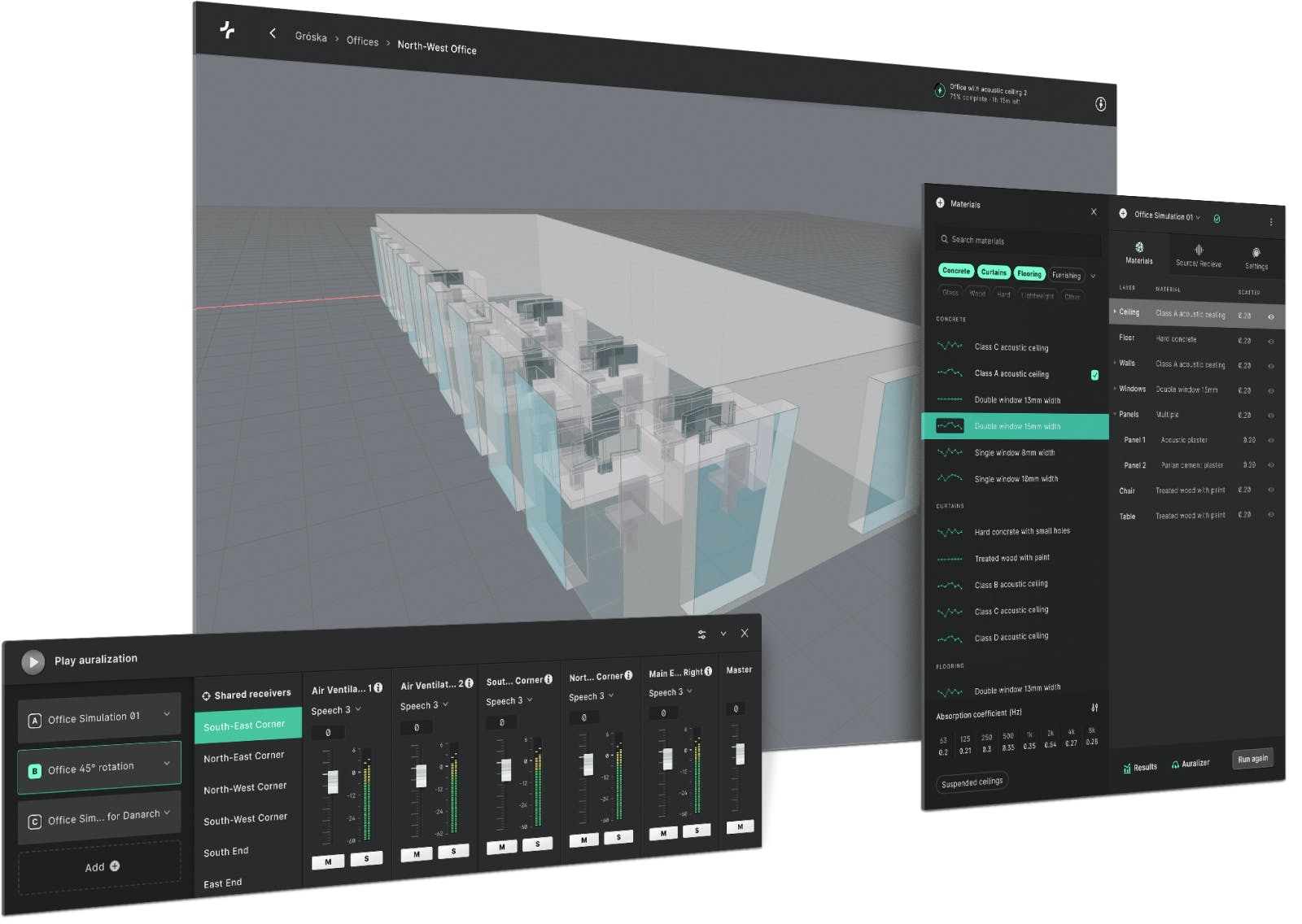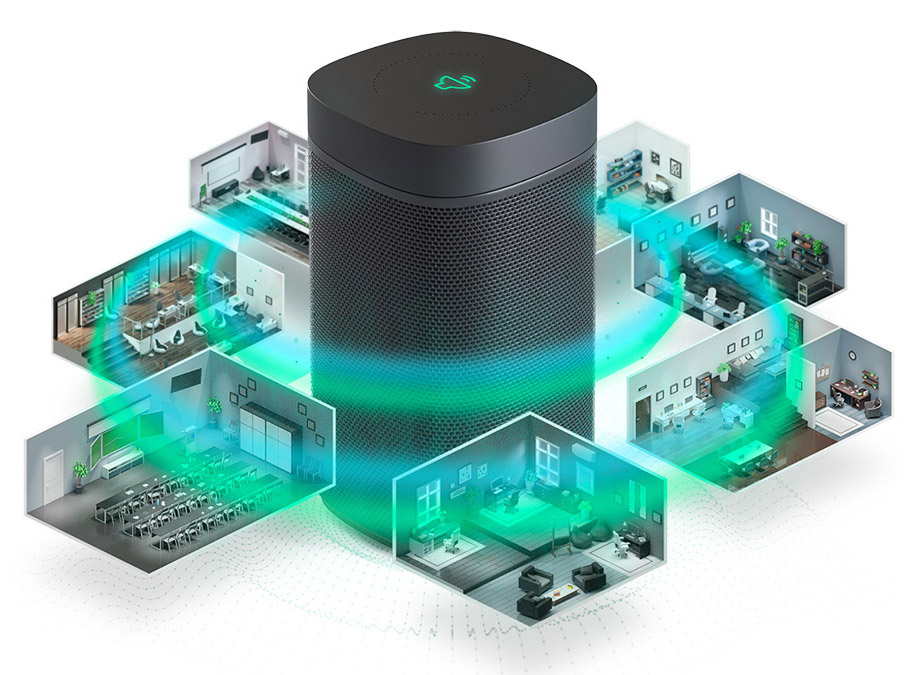Icelandic developer Treble has created a suite of tools designed to analyse and optimise designs for acoustic performance, based on the founder’s own research into wave-based sound simulation analysis
While BIM adoption has primarily been driven by the need for coordinated documentation output, the AEC industry has always hoped to derive other model-centric benefits from this approach. In particular, the analysis, simulation and optimisation of designs has been seen as a significant potential source of competitive advantage.
With this in mind, more advanced 3D practitioners with considerable in-house programming resources have created their own suites of analysis applications. These firms include Foster + Partners, for example, as well as ARD, which presented on this subject at AEC Magazine’s NXT BLD conference last year. Those companies that have taken this route insist that the insights they derive from such tools are especially useful in the early stages of a design.
For other firms, many new conceptual tools now come with built-in analysis capabilities that focus on environmental conditions such as daylight, solar energy and wind. These tools, which include Autodesk Forma, provide quick feedback. The insights they provide may not be definitive, or offer specialist indemnity, but they are giving more firms access to early-stage, performance-based design.
Acoustic analysis, however, is an area where available tools are either highly specialist, developed in-house by very large firms, or both.
Treble aims to change that tune. Last year, the Reykjavik-based company came to market with a more accessible acoustic simulation suite that can generate, from BIM data, interactive, real-time, immersive audio-visual ‘auralisations’.
The Treble platform is cloud-based and uses a proprietary wave-based simulation technology, which offers new levels of accuracy, according to company executives. Geometry can be imported from SketchUp Pro, Rhino and Revit, via plug-ins. The application identifies problems like reverberation, assesses speech intelligibility, privacy, privacy distance and distraction distance.
Recently, AEC Magazine got the opportunity to chat with Treble co-founder Dr Finnur Pind, and hear more about how this self-confessed ‘sound nerd’ turned his attention to the AEC industry.
Find this article plus many more in the March / April 2024 Edition of AEC Magazine
👉 Subscribe FREE here 👈
Sound city
Reykjavik is an exceptionally musical city. It boasts lots of local bands and plenty of places to hear live music, not least at its annual Airwaves musical festival. Every November, live performances take over seemingly every square inch of the city, even its shop windows.
Dr Pind started his acoustic journey within the city’s lively music scene and studied engineering because he wanted to know how guitar amplifiers and other audio equipment work. This drew him further into the field of acoustics engineering, culminating in a doctorate in sound simulation technology. As part of his PhD research, he developed new algorithms capable of simulating sound faster and more precisely than previous approaches. And that, in turn, led to the founding of Treble.
“Our research was always kind of very Icelandic developer Treble has created a suite of tools designed to analyse and optimise designs for acoustic performance, based on the founder’s own research into wave-based sound simulation analysis Treble: sound advice Software practically oriented. We wanted to solve real-world problems, especially for the building industry, where people are always struggling with dealing with acoustics,” says Pind.


“As my PhD was concluding, me and my friend Jasper [Pedersen], who’s also an acoustic simulation guy, thought we could do something with this. We decided to apply for a grant, which we got, so we thought we had better start a company!”
Treble is currently fundraising for a Series A investment round, having already gone through a pre-seed and seed round and raised $10 million so far ($3 million in grants and $7 million in equity). Investors include the European Innovation Council and NOVA, the venture arm of building materials giant Saint-Gobain.
As Dr Pind explains, the Treble application takes a 3D model of an environment, into which the user can place sound sources, such as a human talking, or a loudspeaker. The tool takes into consideration the materials used in the model and then simulates how the source will sound in real life. It might be used for designing and optimising that space, or designing and optimising a sound system, from the small (a speaker phone, say) to the vast (a concert hall system). In fact, he adds, many audio tech companies use Treble to train or improve adaptive audio technologies that adjust to the spaces in which they are placed.
There are two core markets for Treble, as Pind sees it: users that want to build acoustic analysis for a particular sound system for a building, and tech customers who require simulation technology to synthesise a million different environments, in order to create data to improve their audio algorithms. “While these two applications seem quite disconnected, from our technology perspective, it’s all very related,” he says.
Treble deliver results as listening experiences, giving designers and clients the ability to hear the sounds associated with a proposed design. Hearing is believing, after all
At the start of its development, Treble concentrated on serving the sound specialist community, but as the company grows, it is developing tools for architects working on spaces that might include a typical meeting room, an office layout, a call centre, or a classroom.
A key aim for the application development was to make Treble simple to use and able to work seamlessly with other design tools. Going from BIM to Treble, performing an analysis and then getting the feedback can be done in almost one click. Treble extracts the 3D model and its materials, and then simulates how this will sound. Results are delivered as either coefficients, graphs or colour maps. Users can venture into the real-life space and listen to the predicted sound on headphones. They can flip between different design variations and materials and hear how this impacts sound quality.
“We are most proud of this simulation engine that we built, which is very precise. We’ve benchmarked it against many, many real-world scenarios and it’s so precise that it’s not just useful for building design, but also for product development and data generation, where you really need real-world fidelity. Our technology doesn’t use the typical ray casting approach. Instead, we solve the maths equations that describe sound propagation, capturing the wave nature of sound.”
Technology choices
So why did Pind choose to support SketchUp, Rhino and Revit? He explained, “SketchUp is used a lot by acoustic engineers, acoustic specialists. That seems to be a common tool for them to prepare models for simulation. And then Rhino too, is so powerful, and used in early designs, which is a good place to think about acoustic performance. For generative design, we have an SDK/API, perfect for Rhino/Grasshopper to work with for analytical loops. We have done some internal tests with that kind of process, but the API is still relatively new. Some of our customers are testing this out. Revit for BIM modelling, of course, because it’s just so widely used.”
From the onset, he decided Treble should be browser-based and deliver its experience within the browser. This way, it’s possible to create virtual listening experiences, and then send them over the web. The person on the receiving end just opens it in their browser and can listen to the simulated acoustics from a set position within the model. This capability is powered by gaming engine technology.
Because these experiences can be shared via the web and delivered to headphones, you can have as many people as you want listening. Alternatively, the experience could be delivered to a speaker. While for now, these are screen-based experiences, virtual reality options are on the roadmap, leveraging Unity and Unreal.
The company has already been working with companies that are fiercely protective when it comes to data security, such as automotive manufacturers, and Treble complies with the highest cloud security certifications. It’s considered safe enough to persuade some of the biggest tech firms to upload some of their most sensitive designs – but if a big client wanted to deploy locally on its own server farm, for example, Pind says that could be considered.

Until now, Treble has supported the analysis of just one space at a time, with users having to pick representative spaces out of the building they wish to analyse. But that’s about to change with the imminent launch of what Pind calls ‘multi-space import’, where they can input a whole building and get a quick analysis of basically every space inside it. If problematic areas are found, users might zoom in and iterate the design to solve the acoustic issue.
The software doesn’t yet offer advice on rectifying a design, but it clearly indicates where problems lie. It’s then the job of the designer to adjust the materials, the space, or the furnishings to then explore the impact on sound of these changes.
The core analysis isn’t AI-driven, either – but the company is looking to utilise some kind of machine learning to improve processes and efficiency. Outside of the AEC world, Treble is already active in the world of ‘synthetic data generation’, where simulation is used to generate data, which is then used to train machine learning models. For Treble, this means providing analysed spaces for all kinds of modern audio equipment manufacturers. The resulting data sets feed machine learning algorithms that look to detect speech, remove extraneous noise, or improve acoustics in that space. For manufacturers, getting their hands on these training datasets can be a headache. Treble, by contrast, can easily generate 10,000 meeting rooms, containing all sorts of surface materials, furnishing and occupants. According to Pind, this is becoming one of Treble’s biggest use cases.
Hearing is believing
Treble is typical of the way that many new software companies now come to market. Their solutions are written as services in the cloud, with plug-in and API access to relevant third-party tools.
But where it differs from other analysis tools that focus on early-stage design is that while many of these use nice colour maps to deliver indicative results, these may still mean little to a non-specialist. Treble’s answer is to deliver results as listening experiences, giving designers and clients the ability to hear the sounds associated with a proposed design. Hearing is believing, after all, and Treble looks like a useful tool to have in the BIM analysis armoury.
It’s available for a 30-day free trial that offers access to all features. From there, one seat for small and occasional users is priced at €149/month, with a token system deployed to pay for processing. A one-seat unlimited use bundle is €299/ month. For five or more seats, you’ll need an Enterprise bundle, which requires a call with the company to discuss needs. Discounts are available for yearly payment and special pricing is available for academics. Access to the Treble SDK is currently subject to a waiting list.






